#geological understanding
Explore tagged Tumblr posts
Text
Unveiling the West Swale: A Geological Odyssey Through Time

View On WordPress
#ancient ice sheets#ancient past#Chappell Marsh wetlands#crustal deformation#crustal uplift#dynamic geology#Earth’s crust#Earth’s crust dynamics#Earth’s history#Earth’s mantle#Earth’s surface#environmental impact#Environmental Impact Assessment#environmental preservation#erosion#flood management#geological evolution#geological exploration#geological features#geological forces#geological heritage#geological landmarks#geological legacy#geological narrative#geological observations#geological processes#geological study#geological study areas#geological systems#geological understanding
0 notes
Note
I'd pay so much money to hear you give a lesson on paleontolgy. Whenever you write about you seem so formal and passionate ✨️
this is sooooo sweet but i guarantee you don’t want this bc the first lesson would be on terminology and the geologic timeline, some of the most boring but fundamental shit 😭😭
or, hear me out—that but my feeder is stuffing me more and more. the lesson keeps getting interrupted by sips of weight gain shake and many belly rubs
#‘boring’ is relative btw#i hate how and why words work but i love the geologic timeline#i love how life has developed throughout all of it#and i love how a deeper understanding of that span of time truly changes your worldview#i see things as their path through time#idk if that makes sense but i see an oak tree and am just happy to know they’ve been around for like 40 million years#and i LOVE knowing what formations and areas fossils come from#one goal of mine is to have a piece of live oak fossil wood from the willis formation of southeast texas#it’d take some work to identify but god. i am willing#talk#ask
122 notes
·
View notes
Text
gahhhh argh I'm a history student for a reason man, I'm working ahead and reading up on pre modern city structure and it's so much more interesting and easy to understand,,,,, the author is giving me new databases to explore,,,,,, ohhhhh my god I cannot wait to be done with the geography
#twine speaks#esmp mapping project#do you think i need a separate tag for yelling about this thing#maybe i can just organize the coherent explanation parts into a masterpost at some point???#anon who asked about the rivers im so sorry its been forever i know but hydrology makes my head hurt#everything begins to blend into soektbing flow rate something cubic feet/second something something seasonal variation so fast#you have no idea how much time ive spent squinting at us geological survey data and trying to understand how big of a river#can be in different places
3 notes
·
View notes
Text
My church wasn't quite as hardcore on the anti-science stuff as many, but I still absorbed a lot of ideas I just never thought too hard about. Like, my mom definitely told me that all the 600 and 900-year old people in the Bible were because "people just lived longer back then" and I just... didn't really question it. I was a very scientifically minded child, but I just didn't ever think about the logic of it! It wasn't until I was in my late 20s that someone mentioned it and I went "... hang on, that is an absolutely bonkers idea, of course people can't live for centuries??"
I knew that as a kid, too... but I never connected the dots.
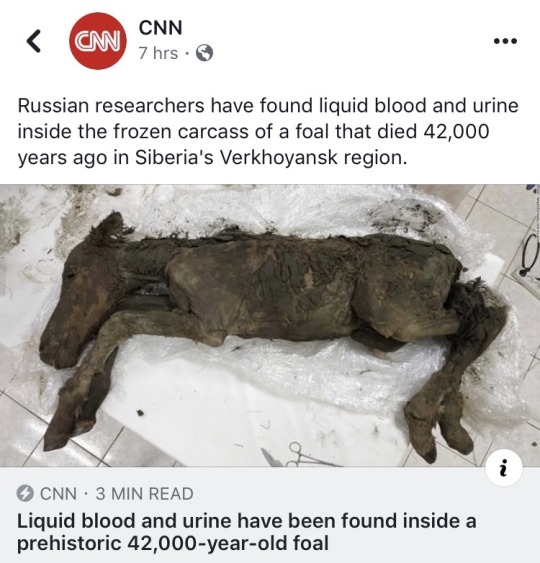

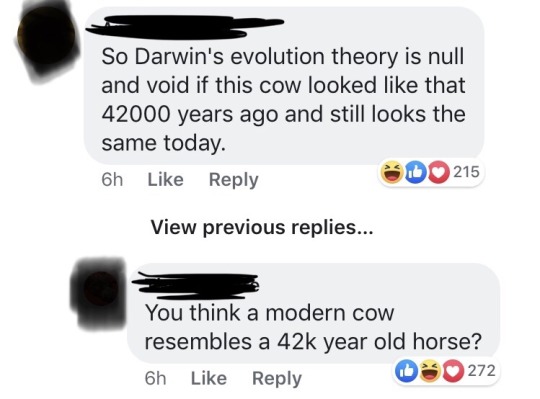



y’all I CANNOT
#Christianity#honestly geologic time is so hard to understand as is#65M years ago and 150M years ago feels like the same amount of time#it's not a real number#let alone BILLIONS#I kinda get why people can't grasp evolution
164K notes
·
View notes
Text
I know I'm asexual and I'm within a reasonable degree of certainty that I'm aromantic but I still feel like I have a pretty firm grasp on what is "hot" and what is "sexy" without those particular areas of attraction. Allow me to elaborate
An aesthetically or conceptually inspiring trait is "hot"
An aesthetically or conceptually inspiring ability is "sexy"
"Hot" is the appreciation for the theatre
"Sexy" is the appreciation for the zeitgeist
Something that is "sexy" is always "hot", but something that is "hot" is not always "sexy"
Things that are "hot", imo:
Antique wootz steel blades
A black 2020 Chevrolet Camaro
Eyeliner
Tongue piercings
Charlize Theron's voice
Things that are "sexy", possibly also "hot":
Martial arts
Pole dancing
Those video compilations of manual labour workers doing things nobody even thinks about super quick and efficiently
People who are really smart who study really specific stuff like geological chalk formations and shit
Things that are definitely "hot" and "sexy":
Being in a hardware store
A perfectly executed backflip
Good art that hits different
The sensation of drinking very cold water when you're really gross and hot and tired and it's like oooohhhhohohoho FUCK yeah
And finally, things that I'm reasonably sure are probably either "hot" or "sexy" that I still don't fully understand but am willing to take the L on:
Getting a massage (?)
Weiners
Football players, probably
Perfume commercials
[Redacted]
2K notes
·
View notes
Text
Earth's Icy Past: Understanding the History of Ice Ages | Proterozoic Snowball Earth
Understanding the History of Ice Ages
Earth’s Ice Ages are periods in the planet’s history characterized by a significant drop in global temperatures, leading to the expansion of ice sheets and glaciers. These periods can last for thousands or even millions of years, and have occurred periodically throughout the planet’s history. The study of Earth’s Ice Ages provides valuable insights into the causes and consequences of climate…

View On WordPress
#Analyzing Ice Cores#Causes of Ice Ages#Climate Change#Earth&039;s Ecosystems#First Ice Age#Geological Formations#Greenhouse#Human Adaptation#Ice Ages#Mitigating the Effects of Climate#Natural Phenomenon#New Technologies#Proterozoic Snowball Earth#Sediment Record#Species Extinction#Survival Strategies#Understanding the History#Well-Known Ice Age
0 notes
Text
Literally every conversation with a colleague/peer in the academic field I'm in (anthropology, with a focus on human prehistory and human evolution) upon them learning I'm an observant religious Jew goes like this:
Person: "Sorry if this is a personal question, but how do you.... y'know......deal with it?"
Me: "Deal with what?"
Person: "Y'know...... y'know......your religion......"
Me: "Meaning?"
Person: "Well, um, how old do you believe the earth is?"
Me: "I follow the geological consensus, which is approximately 4.5 Billion years"
Person: "But......but.....your Bible says that it's 6,000 years old....."
Me: "Technically 5,783 years, so you're wrong there, haha"
Person: "Okay but how do you....how do you reconcile that with science?"
Me: "I don't need to reconcile it. They're not in opposition."
Person: "??"
Me: "The plain text in the Tanakh states that it has been 5,783 years since the creation of Adam, and consequently the world. Judaism has never been about taking the text in the Tanakh plainly, there's always deeper meanings. Who's to say that the 5,783 years aren't just the years since a couple named Adam and Eve met and copulated, triggering the begining of the lineage of Abraham, Moses, and the entire Jewish lineage, and that the six days of creation aren't six phases which are actually pretty in-line with our understanding of evolution?"
Person: "But.....some people believe that it's literally been 5,783 years since the earth was literally created!"
Me: "Okay..... that's what they believe. I don't see how it should bother me, especially considering we're in the field of anthropology where we try to study other patterns of belief, not cast judgement upon them."
Person: "But other Jews believe that!!!"
Me: "Again.....why should that affect my religious and academic senses of self? Judaism has never been a monolith of belief, anyway."
Person: "But-"
#for real it's so tiring#i literally could not give two shits what other people believe#and considering anthropology's history with mocking indigenous creation stories quite frankly you people should be doing better#anthropology#religion#judaism#personal
7K notes
·
View notes
Text
I was struck by how the entity’s growths formed in a spiral pattern, almost like a double helix you’d find in a strand of DNA. Oil is made from the fossilized remains of ancient plants and animals. It’s a sort of geological memory, just like how DNA is an evolutionary memory that allows the body to build and rebuild itself. And the primary thing that it affects when it touches people is their memories, whether random flashes of nostalgic images or deeply personally significant memories.
Going off of the DNA analogy…I don’t think the entity held any malice towards the crew. I don’t think it could hold malice to begin with, or goodwill, or any other more complex emotion. DNA is a chain of chemicals, and we have no conscious control over its transcription. The only thing it “wants,” as far as a chain of chemicals wants something, is to stay alive and to replicate itself. Its connection to oil also makes it feel like whatever dead, fossilized organic matter was trapped beneath the surface of the earth very mindlessly trying to return to life. The assimilated crewmates looked like cancerous lumps, growing out of control and endlessly dividing, not out of ill will, but because the cellular mechanism for growth had broken and was replicating out of control, only writ large, across the body of a whole person. The growths, like DNA writ large, a strand of chemicals trying to reassemble itself from whatever chemical matter from the rig and the crew it could use.
There’s a strange “humanity” to the entity, too, though in a very primal, instinctual sort of way. It wanted to be one with the rig and everyone on it, and it kept dredging up memories where Caz and the others felt especially close to their loved ones, even if they weren’t always happy ones. Caz, too, wanted to be one with his family again, but had that dream dashed by a selfish, individualist action. He wanted to keep his fellow crewmates together, and was increasingly devastated as assimilation or death cut them off from each other. The ending was beautiful, and felt like a barely comprehensible sort of kindness despite everything that had led up to it. For a moment, it felt like Caz reached an understanding with the force that had consumed him and that he in turn had destroyed, at least enough to forgive it and let go. In exchange, he got to relive the last time he and his wife were truly together, the morning he left for the rig. And then, over the empty ocean, we hear Suze’s tearful plea to Caz to come home, to reconnect with her, to be part of their family again. The letter felt like a summation of what Suze, Caz, and the entity itself wanted—to return home, to connect with others, to feel “whole” again.
735 notes
·
View notes
Text
The Report
Winter: General Ironwood, I wish to make a report about my joint mission with, Jaune Arc on a, C Class seek, and destroy mission.
Ironwood: Ahh good. I was going to ask you to report on that mission. You rarely take any missions from the quest board since becoming my second. Any missions you do take, are missions I sanctioned you to take, along with the rest of your specialist members. So, tell me, Specialist Schnee, why did you decided to take on this mission, and with Jaune Arc at that?
Winter: At once, Sir.
Winter: I was made aware of the mission particulars whilst I was playing a game of chess with, Mr. Arc. He informed me that he had never heard of the target before reading the mission request. Upon doing research about the target, a C Class Grimm threat called a, Karniviar, and more research about the, Grimm's last know location, he deemed this quest to be a, B, or potential A Class threat.
Ironwood: He deemed it to be a potential, A Class threat? What made him think so?
Winter: Understanding the potential threat of a, Karniciar alone more than grants it the ranking of a, C to low, B Class threat. It's bone platting requires high caliber AP rounds to pierce. It's claws posse the capabilities to tear through reinforced fencing with ease. It possess a bight force of an estimated 20,000 psi, making it capable of biting a, Knight in two with relative ease. All the while it's tail spike posses the potential to pierce through the armour platting of one of our, Paladins.
Ironwood: Fascinating... what level of it's evolution is this, Grimm categorized as?
Winter: Unknown, Sir. I did my own research before joining, Mr. Arc on this mission, and from what meager reports there are, I lean fiund myself agreeing that this is an, egg based, Grimm.
Ironwood: Egg?
Winter: Yes, the first stage of this, Grimm begins in an egg stage where it remains underground until it matures, and hatches into a fully formed, Karniviar. I would estimate this this new born stage to be at least in the, Gamma Classification.
Ironwood: Gamma? If it was already like this, I would hate to see it in the, Beta Class of it's evolutionary development, let alone in it's, Alpha form. So, this is why, Mr. Arc saw it as a potential, A Class threat.
Winter: Negative, Sir.
Ironwood: Beg pardon?
Winter: Mr. Arc did not see the, Karniviar as a possible, A Class threat for those possibilities, Sir. He saw it as a possible, A Class threat due to it's geological location, and it's potential harm it could inflict upon, Atlas, and Mantle.
Ironwood: 'Because of where it was located, and it's potential harm it could inflict to the people of, Atlas, and Mantle?' I must say you have me most intrigued, Specialist Schnee. Please, continue.
Winter: Thank you, Sir. During, Mr. Arc's research he found out that the, Karniviar was located near a fishing town called, Breakers Peak. This town itself provides sixty percent of, Atlas, and Mantles raw supply of fish.
Ironwood: Sixty percent of, Mantle, and Atlas fish supply? Ahh I see... He classified it as a potential, A Class threat because if it attacked this fishing town it would disrupt the amount of food entering, Atlas, and Mantle, didn't he.
Winter: Partly, Sir. Mr. Arc theorized that if this, Grimm attacked, Breakers Peak, and even if it only managed to reduced the towns fishing capabilities by thirty percent, the consequences could be quite dire. If the price of fish goes up, the price of any food produced items with fish goes up as well. Resulting in an domino effect where the rise in prince of one item leads to the rise of price in another. And, if food prices continue to rise people would start to get worried, and as the more people get worried...
Ironwood: The Grimm become more active. And thus, the result of leaving this, Grimm alive leads to potential devastation to, Atlas, and Mantle without it even having to attack us directly.
Winter: Mr. Arc's thoughts came to the same conclusion as well, Sir.
Ironwood: No wonder he saw it as a potential, A Class threat... His thought process taking into the account not just the, Grimm itself, but where it was seen, and the possible threats it could have in that given area. Hmmm... I think we need to adopt such a train of thought when assigning threat levels to missions.
Winter: My thoughts exactly, General. I have already started a rudimentary outline of a possible new way of classifying , Grimm threats based upon. Mr. Arc's thought process.
Ironwood: Very good. Hand that to me for my review once it is completed.
Winter: Of course, Sir.
Ironwood: So was this the reason why you accompanied, Mr. Arc on this mission?
Winter: It was one of three reasons, Sir.
Ironwood: One reason? What were the other reasons?
Winter: When, Mr. Arc told me about this mission, we where playing a game of chess. A game where... he thoroughly defeated me... Effortlessly at the...
Ironwood: Effortlessly? For you to say that is quite the complement, if I am not mistaken, you are considered a grandmaster at chess.
Winter: I am considered a grandmaster at chess, but after, Mr. Arc thoroughly defeated me, I feel like a novice at chess once again.
Ironwood: What did he do?
Winter: I don't know how he did it precisely, but to summarize: Psychological warfare.
Ironwood: Psychological warfare? Hmmm... I didn't take, Mr. Arc as one who would apply such tactics in a fight. How did he do it?
Winter: I was focusing on the fact that, Mr. Arc hadn't moved his queen, thinking that his plan was to move his other pieces into the perfect position so he could suddenly spring a trap, deploy his queen, and go for the kill. But, in actuality his plan was to make me think that he had some sort of grand plan with his queen as the focal point of it. However, Mr. Arc had no intention whatsoever of using his queen, and was instead focusing on getting my other pieces into the perfect position. And, then go for the kill.
Ironwood: His entire strategy was based on the idea that he was going to us his queen, the most valuable piece on the board. When in fact, he had no intention of using his queen from the begining?
Winter: Correct, in fact I was so focused on his queen I never realized that he in fact, never physically touched his queen to begin with. It was because of this unexpected strategy he implemented, I was curious to see how he planned to deal with the a beast such as the, Karniviar all on his own. So, I asked to accompany him.
Ironwood: I see, how did he deal with the, Karniviar.
Winter: When we arrived at the town he asked the locals where the, Karniviar was last seen, Jaune then went to the area to explore it. When we arrived at the area it was last seen, an old abandoned, Dust mine. Jaune spent some time watching the monster from a distance where he finally implemented his plan.
Ironwood: Which was?
Winter: Mr. Arc came closer to the, Karniviar, the beast turned to roar at him, and in that instant the, Karniviar roared, Mr. Arc threw one of his portable shield walls into it's mouth. When it went done the creatures mouth he activated it, and broke the creatures neck from the inside. The creature died within seconds, and started to fade away before it even hit the ground. From start to finish, it only took a minute for, Mr. Arc to defeat a C Class threat.
Ironwood: Seriously?
Winter: Yes, I have video of the event to prove it.
Ironwood: Show me.
Ironwood: ...
Ironwood: Impressive... that was most impressive.
Winter: I assumed, Mr. Arc would stabbing the creature between it's armour plates, but as, Mr. Arc said: 'There are plenty of chinks in its armour to exploit.'
Ironwood: I would have attacked the creature between the armour plating, or trying to break the platting. I must confess, I wouldn't have thought about going down it's throat. I can see why you decided to join, Mr. Arc on this mission. This was quite an informative mission you decided to take on.
Winter: That... That wasn't entirely why I joined him on this mission, Sir...
Ironwood: Ahh, the third reason why you joined him. Tell me, what was this third reason?
Winter: I am... I am worried about, Mr... I am worried about, Jaune's mental stability, Sir...
Ironwood: His mental stability?
Winter: As a result of his social isolation because of his peers. Jaune has developed a habit of talking to himself; He denies that this has been happening of course, but on the few times I have caught him talking to himself, his eyes linger to the side for a bit before denying it.
Winter: I am worried he will harm himself, directly, or indirectly because of this. So, Sir, I request permission to be assigned to any joint missions, Mr. Arc takes. So, I can ensure his mental stability.
Ironwood: ...
Ironwood: Permission granted. Also try, and see if we can get him in for a psychiatric evaluation as well. In fact, put all of, Team RWBY, and the other members of, Team JNPR into this as well. This is standard practice anyway among veteran, Hunters. These kids have been through quite enough as it is.
Winter: Thank you, Sir. I will do so at once.
Ironwood: Oh, and, Specialist Schnee?
Winter: Sir?
Ironwood: My condolences concerning the loss of your father.
Winter: T-Thank you, Sir... It was so sudden, I have no words for this sudden, terrible incident that has happened to my family. It's such a shame that he was taken from us...
Ironwood: ...
Winter: ...
Ironwood: That was a terrible performance, Specialist Schnee.
Winter: Did you honestly expect me to be sad after that monsters death, Sir?
Ironwood: No, not at all. I just thought I should say it, it was polite to offer my condolences for the loss of a family member. I certainly didn't take a celebratory drink at the news of his passing. No, nothing like that happened at all.
Winter: Of course, nothing happened at all.
Ironwood: Well then, is that all, Specialist?
Winter: Yes, Sir.
Ironwood: You're dismissed.
Winter: Sir!
234 notes
·
View notes
Text
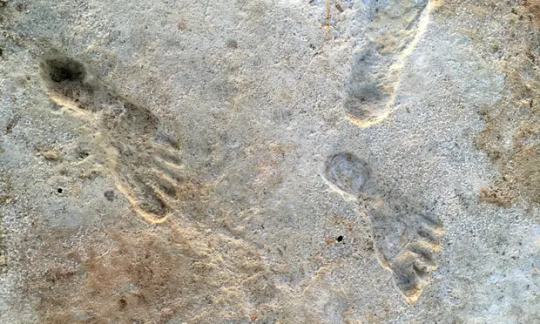
New Mexico Footprints are Oldest Sign of Humans in Americas
Fossil footprints date back to between 21,000 and 23,000 years ago, upending previous theory that humans reached continent later.
New research confirms that fossil human footprints in New Mexico are probably the oldest direct evidence of human presence in the Americas, a finding that upends what many archaeologists thought they knew.
The footprints were discovered at the edge of an ancient lakebed in White Sands national park and date back to between 21,000 and 23,000 years ago, according to research published on Thursday in the journal Science.
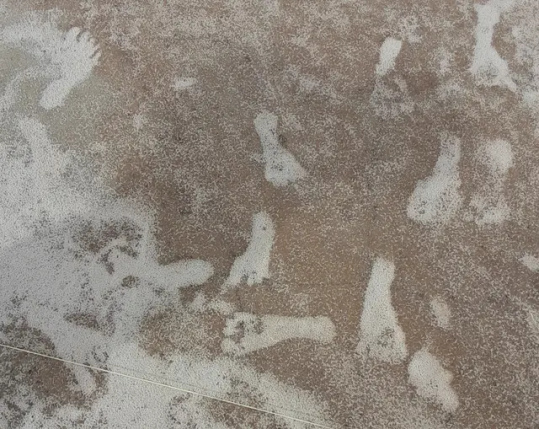
The estimated age of the footprints was first reported in Science in 2021, but some researchers raised concerns about the dates. Questions focused on whether seeds of aquatic plants used for the original dating may have absorbed ancient carbon from the lake – which could, in theory, throw off radiocarbon dating by thousands of years.
The new study presents two additional lines of evidence for the older date range. It uses two entirely different materials found at the site, ancient conifer pollen and quartz grains.
The reported age of the footprints challenges the once conventional wisdom that humans did not reach the Americas until a few thousand years before rising sea levels covered the Bering land bridge between Russia and Alaska, perhaps about 15,000 years ago.
“This is a subject that’s always been controversial because it’s so significant – it’s about how we understand the last chapter of the peopling of the world,” said Thomas Urban, an archaeological scientist at Cornell University, who was involved in the 2021 study but not the new one.
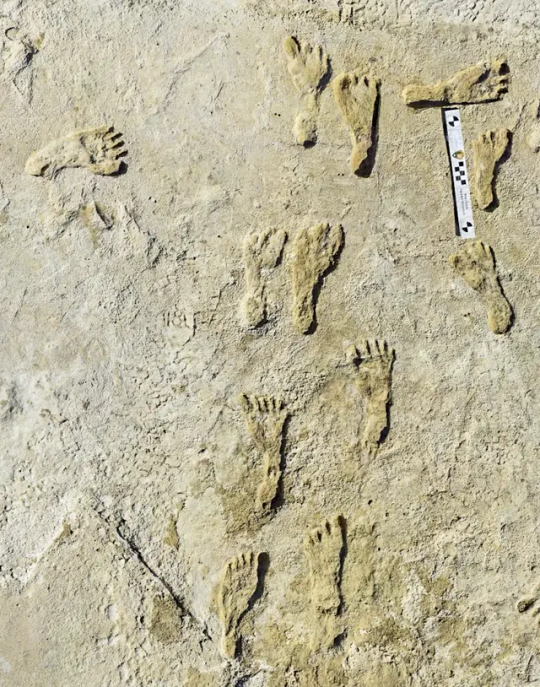

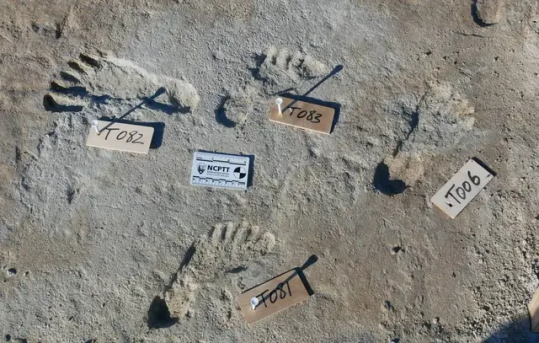
Thomas Stafford, an independent archaeological geologist in Albuquerque, New Mexico, who was not involved in the study, said he “was a bit skeptical before” but now is convinced.
The new study isolated about 75,000 grains of pure pollen from the same sedimentary layer that contained the footprints.
“Dating pollen is arduous and nail-biting,” said Kathleen Springer, a research geologist at the US Geological Survey and a co-author of the new paper.
Ancient footprints of any kind can provide archaeologists with a snapshot of a moment in time. While other archeological sites in the Americas point to similar date ranges – including pendants carved from giant ground sloth remains in Brazil – scientists still question whether such materials really indicate human presence.
“White Sands is unique because there’s no question these footprints were left by people, it’s not ambiguous,” said Jennifer Raff, an anthropological geneticist at the University of Kansas, who was not involved in the study.

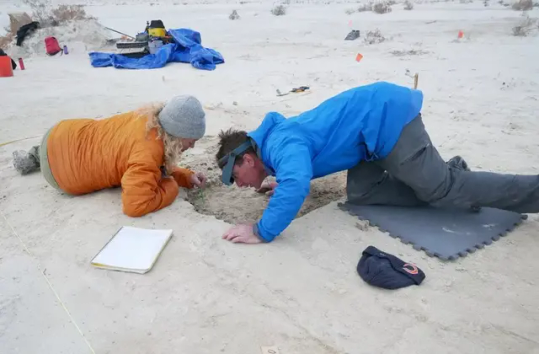
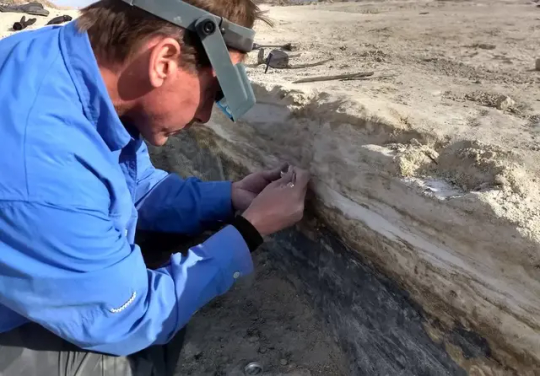
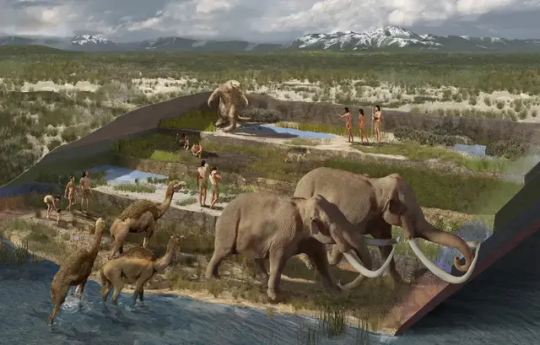
#New Mexico Footprints are Oldest Sign of Humans in Americas#fossil#fossil footprints#White Sands national park#ancient artifacts#geology#geologist#archeology#archeolgst#history#history news#ancient history#ancient culture#ancient civilizations#ancient man
702 notes
·
View notes
Text
What your western classics tattoo means:
-Inferno: cringe. you think about hell a lot but don’t believe in god. You like the boiling river of shit. You say you think Paolo and Francesca are romantic but you don’t understand courtly love.
-Purgatorio: pretty good. You probably payed attention to the reading. You should take up endurance hiking with a bag of rocks
-Paradiso: excellent. You’re annoying about the existence of the sublime in music. You were really into string theory in middle school. If I give you a drink you’ll start talking about Hildegard
-Lysistrata: you had a lesbian separatist phase. You're really into your community garden, or you want to be. Every thirteen months, one of your posts goes viral
-Iliad: your meat is huge
-Odyssey: your wife is smarter than you. You're a killer tabletop DM. You would fuck a witch if pressed
-Don Quixote: based. unless it's the picasso illustrations, then you're basic.
-Pascal: if it's math, you're gay. if it's philosophy, you're a stoner
-Aeneid: you also have a tattoo of the Capitoline Wolf. You love the origin story part of superhero movies
-Middlemarch: you don't exist. nobody has a middlemarch tattoo
-Jane Austen's works: you're the person people text "can i be mean." You're good at parties but you hate them. You're think you're funnier online than in person
-just the word "logos" in Greek: you didn't do the reading
-Sappho: you are a trans lesbian
-Proust: you post a lot of "slut in theory" memes. you get anxious going to the seven-eleven
-Euclid: you taught yourself to draw a perfect circle. You think about geological formations a lot. You've memorized that Edna St. Vincent Millay poem
-Herodotus: you're a worldbuilding geek. You wanted to talk about the necrophilia passage more in class. You will buy any novel with a map at the front
226 notes
·
View notes
Text
Magical Correspondences 101
So I figured I should put all of my stuff on correspondences in one place for convenience's sake, since having them spread in a bunch of short posts isn't really helpful if I need to link them. Anyway, for those of you getting into magical correspondences, here's what I've got!
So, what are correspondences?
A lot of modern witchcraft operates on the belief that things like stones, plants, colors, and so on have certain metaphysical properties. Why do they have these properties? There are multiple explanations. Sometimes the properties are supposed to be innate. Sometimes they supposedly exist because the object in question is a symbol for something else. You'll find that many spells combine these two ideas, such as using an herb because of its inherent properties it's believed to have, then also using a flower because it's a symbol of a deity.
(Will it hurt anything to mix these concepts? Personally, I don't think so. Spiritual beliefs and metaphysical models are often messy, and occasionally contradict each other. I've never really seen it hurt anything.)
If you search around, you can easily find charts that describe various properties associated with various things. People sometimes assume that these properties were handed down to us from authorities who were so in tune with magic or the divine that they were basically infallible, and newbie witches just have no hope of figuring things out for themselves.
Fortunately, that's not really true!
Some correspondences are informed by nature. Others are social constructs.
You might see correspondence lists say that gold is associated with wealth, that apples are associated with love, and pink is associated with femininity. These are all social constructs that have nothing to do with the natural qualities of these things.
Other correspondences are informed by nature, however. Green is associated with life because healthy leaves are typically green. Hot peppers are associated with pain and torment because capsaicin produces a burning sensation.
(This isn't to say that social construct correspondences are all inherently bad, or even lesser. But it's good to be mindful of the differences, because it makes it easier to figure out what you can change and mess around with, and how!)
Even when correspondences are informed by nature, they can still be subjective.
The world is full of vastly different ecosystems, climates, and geological structures. Different regions have their own plants and animals. And even within your own region, you'll find that nature lends to many different correspondences for the same thing. Hot peppers might be orange or red, but so are many sweet fruits. Water can nurture life, or it can drown it.
Some people who acknowledge this will say that it's all about intent, but I personally believe it's a bit more about context. Just look at at the infamous children's hospital with the red path on the floor, and how the it creates an unnerving atmosphere despite whatever "positive connotations" red can have. I think if you're trying to figure out what to put in your spell, thinking contextually can help you make appropriate decisions.
In any case, I do think it's important to lean toward correspondences that have meaning to you. What some ancient guy who lived and died on the other side of the planet thought doesn't override your lived reality and your cultural experiences.
If you want to really learn correspondences, observe the world around you!
Correspondence lists can be good references, but they don't really help you develop a proper understanding. To do this, pay attention to plants, stones, colors, shapes, etc. and ask yourself:
Where do they turn up naturally?
How do they behave? What do they do?
Where and how do people use them, and what are they associated with in these contexts?
Where are things often grouped with other things? What is the significance of these groupings?
(If you keep a Book of Shadows or other magical journal, I recommend writing down your findings!)
So yeah, that's the basics on magical correspondences. They can look a little intimidating at first, but they're actually a lot more simple and straightforward than you might realize.
Happy witchin'!
84 notes
·
View notes
Text
The Moon might be a bit of a dark horse when it comes to water. According to a new analysis of mineralogy maps, water and hydroxyl – another molecule made up of hydrogen and oxygen – can be found in multiple locations across all lunar latitudes and terrains, even where the Sun shines down most powerfully. It's a discovery that has multiple implications. It can help us understand the Moon's geological history and ongoing processes, and inform future crewed missions to Earth's satellite.
Continue Reading.
108 notes
·
View notes
Text
#tfw you don't know which way is up #HumpDay
Volcanic activity on the seafloor creates scattered oases known as hydrothermal vents. These underwater geysers spew superheated water rich in dissolved minerals. When that scalding-hot water comes in contact with frigid deep-ocean water, the minerals crystallize, raining tiny flecks of “ash” to the seafloor. Those mineral deposits build up over time, creating breathtaking spires and “chimneys” that can grow to hundreds of feet tall. Less than 25 percent of the seafloor has been mapped at the same level of detail as the Moon or Mars. MBARI’s mission is to advance marine science and technology to understand our changing ocean—from the surface to the seafloor. For nearly four decades, MBARI has explored the deep ocean, recording thousands of hours of video with our remotely operated vehicles and mapping thousands of kilometers of seafloor using advanced robots. Together, these tools are helping to create a clearer picture of the amazing environments hidden in the ocean’s inky depths. The astonishing communities that live on and around hydrothermal vents have evolved to flourish under extreme temperatures and chemical conditions. The remarkable tubeworms, crabs, clams, and more that thrive here are found nowhere else on Earth. Now, with more companies looking to extract mineral resources from the ocean, it is more important than ever to study the deep sea and the wonders it holds. The maps we create and data we collect can help resource managers make informed decisions about the ocean, its inhabitants, and its resources. Together, we can safeguard these unique biological and geological treasures.
113 notes
·
View notes
Text
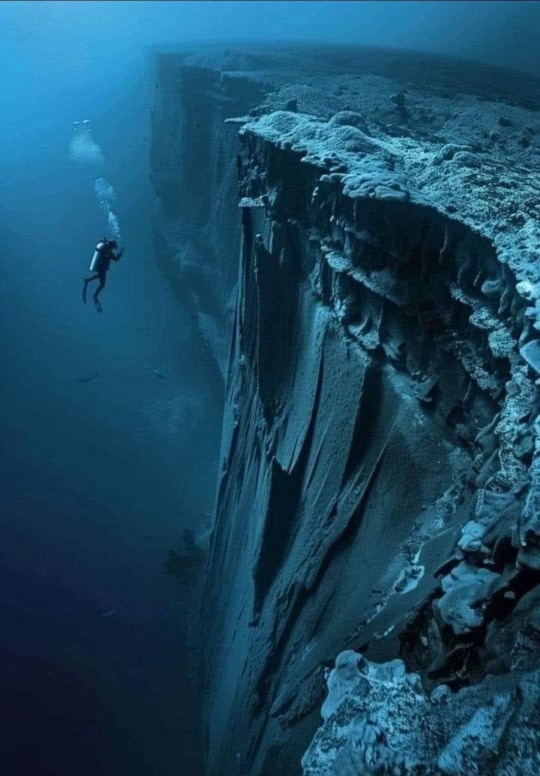
🗻🌊The deep seabed is defined as the region that is more than 200 meters deep, extending to the abyssal plains that range from 3,000 to 6,000 meters. Beyond these plains are ocean trenches, such as the famous Mariana Trench, which reaches an impressive depth of up to 11,000 meters. These abyssal and hadal areas host a diversity of life adapted to extreme conditions of pressure and darkness, and are crucial for understanding the geological and biological processes that occur in the deep ocean.
111 notes
·
View notes
Text
[SMUT] TWICE Dahyun x Male Reader - "Conquered By An Abomination"

Here's my final one-shot for this year which is another smut fic featuring Dahyun. I want to say that I'm pretty proud and impressed at myself for being able to catch up on the 4th quarter after being too busy during July-October. This fic has got to be one of my experimental and unique works that I decided to try writing, because the concept that you're about to see here was never been done by me before, meaning that this my first-time writing it. Please understand and pardon me if this one turns out to be not suitable to the liking of some, as I feel like this might not be everyone's cup of tea. Enjoy reading and celebrate a Happy New Year with your loved ones, please!
Here's my Ko-fi account where you can drop your donations or ask for a commission. You can check it out on my Tumblr profile too! Buy knightyoomyoui a Coffee. ko-fi.com/knightyoomyoui - Ko-fi ❤️ Where creators get support from fans through donations, memberships, shop sales and more! The original 'Buy Me a Coffee' Page. TRIGGER WARNING: contains R+18 mature content, smut WORD COUNT: 4,500+ TAGS: abduction, aphrodisiac, tentacles, rough sex, monster fucking, gangbang, breast play, deepthroating, ass filling, creampie

On Friday, November 13, astrophysicist Dr. Kim Dahyun and her research team went from Busan to Seoul to visit a location where they were tasked with conducting a comprehensive examination.
Based on radar data from their headquarters, it was seen that around midnight yesterday, an object that seems to be a fragment of an asteroid or comet crashed into the vicinity of Seoul.
Their chief professor and mentor at the research lab gave them the order to report any unusual sightings they came across there before calling the military and defense squad to seize control of the area and place it under lockdown, keeping everyone outside of the sector out.
Dahyun and her group entered the hidden area through their vehicle, bypassing the main road and making their way to the designated site. They made the decision to park close to the danger zone as they were leaving the road so they could more easily reach the astronomical devices inside.
"So what's this anomaly of yours supposed to look like?" One of her intern graduated to SNU, YN LN asked her after arranging all the panels around the van.
"It's almost the same as what we used to find from the sky, but this one was the first to do the unthinkable." Dahyun answered, wiping her eyeglasses. "The record says that it's like a small shooting star that emerged from the sky, but the impact it left when it came contact here almost triggered a mild earthquake."
"So that's why the sent us in." He responded, nodding his head understandably.
Dahyun turns her head around, acknowledging her other assistant who is testing some devices that they will equip on their hands outside. "Uhm, Minyoung excuse me for a sec will you?"
"Yes, Miss Kim?"
"Can you grab for me that gloves beside the first cabinet?" She pointed at the direction. Minyoung saw it and unhesitantly passed it to her. "Thanks."
"Are you guys good now?" She checked on her accomplices. They signalled her with a positive note. "Okay, let's take a look what they have in store for us."
After getting out of the van, they began to swing the tall leaves that were obstructing their view and path on the verdant field. They weren't even gone from their car for that far when they observed something startling.
The three researchers were welcomed with a bald area on the top portion of the field, which was produced by a big crater on the land. The leaves that were impacted by the collision scattered across the hole.
"This looks huge." YN exclaimed with a gasping mouth. "Are you all sure it's just a thin shooting star-like that appeared yesterday?"
"It is. They even presented it to me." Dahyun explained. "The anomalies here would be always associated to the geological condition here. I have a chart that describes everything we have encountered for these past few years and I've never seen anything like this that an unknown object also gave us a hard time dealing with a quake."
"We better get starting now because to be honest, this is getting really unpredictable to the minute and I couldn't understand what's going on as long as we see it ourselves." Minyoung suggested. Dahyun and YN looked at her and they were both convinced. YN planted a huge nail beside the crater and wrapped a rope around it that will serve as their handle when going down to the crater.
As the three of them made it below. They began to look around and observe deeply the surfaces. Minyoung kneels down and poked a stick on a gross material, forming a disgusted expression on her face. "Uhh guys, take a look at this."
Dahyun and YN came towards her. "Does this remind you of something?" Minyoung said as she twirled and flipped it around, almost like she's playing on it.
"Is that an eggshell?" YN asked, furrowing his brows at the black and velvet-colored thin piece swimming at a pool of gooey substance.
"Could be. Just look at the fluids around that probably came from this." Dahyun said, mentioning the slime. They garnered their eyes more at their surroundings, there were even bigger ones that what Minyoung has found and they were also mostly covered with a slime.
"Get away from that, Minyoung-ah. Don't you see how disgusting it is?!" YN scolded his friend. He started to cover his nose too with his shirt. "And do you guys smell that?"
"Yeah, it's bad." Dahyun clenched her face in dislike. "Feels like there's a rotting organ in here."
"Wait, so are we gonna conclude right away that we just discovered a cracked egg?" YN said. He scoffed and rubbed his face. "Am I correct at what I think this might mean?"
"No, YN. We're just getting started here. We are researchers we came here to finish our task and not do it in rush just because we're in an unsettling situation right now." Dahyun protested. "We don't jump into conclusions right away."
"S-sorry, Prof." YN bowed his head. "It's just.. I'm sensing something wrong in here."
"YN, let's just wish it would not happen at all. Okay?"
YN looked at Dahyun's comforting and calm demeanor. He nodded shyly. "Yes, Ms. Kim."
Snapping a few photos of the scene, Dahyun gave Minyoung and YN the order to take everything out of the van that would be necessary for them to make a report and gather any evidence that they would find here. Dahyun borrowed a tracker and used it to glide around the crater's borders while they did so.
The tracker bumped against a tall leaf, and the alarm began to sound loudly. After receiving an alert, Dahyun was perplexed as to what it had discovered. Before she caught anything, she inspected the dirt and leaves in the area.
The leaves did not have sharp, pointed ends. Rather, it appears as though the flower has grown directly onto the leaf, utilizing it as a stem or something unexplainable. Dahyun thought it was rather strange to see a flower extending through the body of the leaves itself.
She stepped back to wipe the dust off her face as the flower burst some sprinkle of nectar on her face as she reached out to touch it. She held her tracker again while she coughed, but she quickly figured out that it was unresponsive.
"There's got to be some power or equipment malfunction" Dahyun hissed on the device as she carried it. "Minyoung! YN! I need a help on-"
Dahyun was about to walk back on the van when suddenly she went out of balance and slipped through the crater. When she was about to get up, she saw the van fleeted upwards to the sky, a hole was formed on the bottom of the vehicle before it splitted in half when it crashed on the ground. Her heart shattered she heard it explode.
She wasn't devastated because of the vehicle, but because of the fact that two of her colleagues were inside that van when it exploded. "NOOOOOOOO!!!!" she shouted at the horrific sight from outside the crater.
Dahyun ran through the ropes and hurriedly climbed but she started getting drowsy and lightheaded, her body losing it sense until it managed to get her out of the grip from the rope, sending her unconscious inside the crater.
Right after she snapped out, the ground she's laying at started to flow like waves.
Dahyun woke up hours later, but not without a clue on her, as her mind was still rebooting from what happened to her earlier. Her eyes opened, and there she witnessed herself sitting in the middle of what it seems to be a cave.
She slowly risen up to her feet, her feet stumbled a bit as she felt a dull ache on her head once again. Rubbing it to ease it off atleast, Dahyun breathed deeply before returning back her attention on her current situation of getting stuck.
She couldn't find any light that would provide her to a clearer vision of everything around her. Nervous and desperate to find a route to escape, Dahyun had no other choice but to walk around and explore for a route way out.
"HELPPP!!! ANYBODY OUT THERE CAN HEAR ME?!" Dahyun pleaded as loud as she can reach on her voice. "MINYOUNG? YN? WHERE ARE-"
She paused as she recalled earlier seeing their van where her two assistants were staying in. Her emotions overtook her, releasing teardrops across her face. She also began to feel guilty, thinking that she should have ordered them to go back inside and fetch all of their equipment on her behalf.
Maybe if it wasn't for her, she wouldn't led both her friends on their own demise. Dahyun sobbed heavily as she repeated calling their names in agony.
She slammed her hand accidentally on some surface. Dahyun probably guessed it a wall where she could support herself while trailing along the cave. She took the opportunity, caressing and patting it.
However, Dahyun noticed something different. It was rough, soft, and quite sticky as she could describe. She tried to smell it, and it brought her to a familiar rotten organ smell she, Minyoung, and YN had depicted earlier.
"Huh? What is this?" Dahyun questioned herself where she is also the only one who could find the answer. With one more pat onto the strange wall, she noticed the entire area start to glow including the one where she is touching.
She roamed her eyes around, and it made her tensed to learn that she does indeed correct on her being stuck inside a cave right now, but rather everything that blocks her from the possibility of escaping is covered with unidentified type of organs.
There was a dark area on the far end just right in front of Dahyun's direction. She could swear that she had a glimpse of something that just moved there and disappeared from the shadows in a few second. "WHO'S T-THERE?!" she shouted as she started having suspicions in her mind.
Taking few steps ahead to check out what it is, a loud roar put her into halt before she was about to scream in terror. She fell on her butt and her breathing goes faster, wondering what kind of a monstrous noise she just heard.
She then saw something emerging from the drak shadows. In her utmost bewilderment and panic, an abomination has appeared in front of her, standing tall with its bulbous, humungeous and very disfigured appeareance.
It's size is like almost half of the space of the cave they're occupying, and Dahyun was in complete disbelief that the fear of YN he was trying to refer a while ago has unfortunately manifested into reality. A beast from the space or in other term made by humans ourselves, called aliens- are real in Dahyun's universe.
"D-don't come closer to me!" Dahyun tensefully said as she starts to crawl away from the monster. It blabbered some unusual noises that almost formed some inaudible words while shaking its head madly, and after that, Dahyun saw something popping out of its body.
Two slimy tentacles just came out from each sides and began crawling through Dahyun to reach each of her ankles and get wrapped. She then felt her body being dragged closer to the monster and Dahyun repeatedly yelled, begging for it to stop while tugging the tentacles with all the force she could apply to yank it off, only to end up with no effect.
As Dahyun was placed almost inches away from the gigantic alien creature, she has finally accepted her fate of being helpless and in danger. Tears filled with nothing but negative emotions streamed out of her eyes before the monster blew out some gas that has a color similar to the nectars that were sprayed on her by an infected plant earlier.
After she smelled it, she soon finds her body growing into a sense of arousal that urges her horny feelings to activate. She tried to endure it but she could swear that her skin were releasing more sweat and her pussy and her nipples are starting to become sensitive.
The tentacles must've found the lustful sensation brewing inside of her, and they took the perfect timing as one of them starts to slid through her pencil skirt and lift it up her tummy before it traces her pussy through the soaked panty. It's partner focused on her clothed breasts, bumping it and feeling its softness as it bounces.
Several more tentacles were released from the creature, but this time with various sizes and colors. Some were lighter or darker, some where thicker or thinner. The thin ones snaked through her sleeve and forcefully spreaded her top, revealing her white strapped bras containing her milky tits.
The rest then helped to remove her skirt, exposing her into half naked with her matching pair of white bra and panties. "NOOO! PLEASE, DON'T DO IT!" Dahyun pleaded until she unexpectedly released a sultry moan when a fast tentacle moves through her cheek and rubs itself on her skin.
All the tentacles starts to wrap around on her meaty thighs and slender arms in order to suspend her in mid-air. Their touch becomes even more satisfying and felt relaxing to Dahyun despite how denial the words coming out of her mouth.
Being half-naked and spreaded in front of the creature's ugly looking face, the tentacle then moved from her cheek to her lips as it continues to rub across Dahyun's pretty face. Her lips starts to pucker and the effects of the strange gas which was probably aphrodisiac as Dahyun guessed, made her more susceptible as it clouded her mind with lust and temptation.
She starts kissing the tentacle before it slid through her mouth, she sucks on it like it was a cock entering on her.
The other tentacles started to become bold also. They tugged and remove her bras and panties, finally making her naked. There's these suction cups- like tentacles went to crept up on her torso to her underboobs, feeling her perky tits bounce on their motions before its lips opened and sucked on her hardened pinky nipples.
Thinner tentacles spreaded her walls, assisting the thicker tubular object crawl and enter her tight pussy. It effectively brought another relieving feeling on Dahyun's aroused body, moaning in rhythm to the tentacle's barging on her constricted hole.
Their movements became faster and rougher, including the suction cups almost biting her nipples then returning to lick on it like there were supposed to have milk leaking out of Dahyun's breasts.
Due to the sudden increase of pace, it also din't allow more time for the tentacles to reach their limit. Despite her little efforts and strength to shake them off their body, Dahyun uncontrollably welcomes their slimy liquid that probably resembles to a man's cum, into her warm throat and womb.
She lets out a poor groan and whimper, sniffling in fear of what it could bring her after when she watched the odd colors and thickness of their cum flowing out of her. She hoped it would not cause her to get pregnant, especially if it would mean that she would breed an abnormal hybrid that sets aparts from what a normal baby should look like.
Desire is what Dahyun could just accept within her, disturbing and letting out the pleasure she has long kept to seek any solutions for it. First load wasn't enough for the tentacles howsoever, as she felt the tentacles changing their hold on her limbs to prepare her for a next position.
Still hanging from the mid-air, Dahyun's body was forced to bend, with her backdoor being the one facing the beast. The tentacles spreaded her legs, causing her cheeks and puffy pussy to open a little.
With her arms around her back, Dahyun endured all the harsh slaps of the thicker tentacles to each of her curvy asscheeks. She lost the count of how many times they played on it, too obsessed on how soft and big enough for it to give comfort on these creatures.
Funtime didn't lasted longer as they went already to the next move. She felt the girthy pair pounding both her asshole and pussy, fucking them simultaneously. Her body went back and forth at their movement.
The suction cups returned to play on her breats, tugging on her nipples and stretching them as farther her endurance could take. Dahyun hissed in a mixture of pain and pleasure only because it aided the abuse her tits were being applied at when she felt something gliding through her entire back.
She turned her head around and witnessed the alien sticking out its wide and long tongue slurping the taste of of the sweat forming across her back view.
The thick tentacles reached their climax, exploding a second amount of load to her love holes. Dahyun huffed at the unmatched energy of these active creatures using her body for pleasure.
As they release from her ass and pussy. She was repositioned again. She was now facing the monster completely before she gulped when she realized what she was about to suffer next.
A huge- like literally- gigantic cock, probably measuring around 14 or 15 inches in size unbeatable to any men's size around the world, is ready to explore Dahyun's innards. Dahyun wiggled her legs, afraid that she might break from being unable to take his girth.
But again, she is outnumbered with numerous tentacles attached to her body, imprisoning her from any attempts of escaping, even though she has no other palns anymore as the aphrodisiacs are still in full effect on her.
Their strength pressed Dahyun's body to the awaiting cock. Due to its massive size it struggled to enter Dahyun's tight little pussy before it succeeded, only for the poor scientist to scream and grit her teeth in a shocking pain while the creature twitched and produced more creepy noises.
Thankfully, it didn't last long as the impressive pleasure began to take over her body when the monster started ramming his cock on her pussy, demolishing her womb inside. She went crazily bouncing on its crotch. Dahyun's eyes are completely white, with her pupils now rolled at the back at the intense pace of fucking she's receiving.
Her mouth began to lustfully agape, with her tongue sticking out as the monster cock continues to push deeper across Dahyun's walls. Her ass starts to create loud claps around the cave as it hits the alien's crotch repeatedly.
The giant cock stuffed into her pussy then pulsated, as it erupted a terrifying amount of dirty white cum almost inflating Dahyun's stomach like she is about to be mistakenly identified as pregnant, before it slowly slid out of her pussy, allowing the rest of the load to explode out of her abused hole.
The tentacles lets go of her body, releasing Dahyun on the ground, which gave her time to rest for a while. She panted heavily and speechless at the rough fucking she just had with the monster alien. She couldn't deny that there might be no other man she would ever met that would match the performance of what this monster has showed to her.
All of the tentacles and the bulbous cock slowly erected again the more the creature stares at Dahyun's messy and sticky nude body lying on the floor. They decided to proceed with the last action, as they focus once again on her nether regions.
Lifting her up, they spreaded her arms and legs again and faced her closer to the creature. The suction cups slowly crawled on her back then cupped her full breasts from behind. Dahyun whined and moaned at the relaxing and tickly feeling it gives. One tentacle went through her tongue, a pair goes back to her pussy and asshole.
There was a twist added again coming from the idea of the monster. Wanting to give every single part of her body that could provide a purpose of satisfaction to this monster's desire, they let go of Dahyun's hands and two tentacles caressed her fingers.
Dahyun sensed their hidden message for doing that and finding out the answer, she formed a fist and gripped the tentacles, stroking them like she would do to a male cock.
All of her body and now functioning properly following the monster's command. Dahyun's mind is full of sex. She has been hypnotized and manipulated too much by the pleasure and sensation that the creature has been passing through her using its ability to fuck her senseless and take her breath away.
The thick tentacles had her overpowered and weak from the way they drill through her holes as deeper as they could get. Dahyun felt her neck bulging as the tentacle gave her a deep throat, her clit being scrubbed by a tentacle with a brush-like end on it to add more pleasure, and the other tentacle wiggling around her ass.
They all began to pull the trigger of increasing the speed while they all moved in unison, their grip on her skin went tighter as they felt this familiar tightness in their system, approaching the climax of their endurance. Dahyun squirted her juices again and spasmed at her own orgasm, resulting to her walls clamping on the tentacles more.
Few more waves, pumps and strokes they gave and finally they executed their final blow, releasing their cum flowing through her throat, ass and pussy simultaneously, as she switches through gags and moans. The two other tentacles enwrapped on her fists splashed their warm sticky liquid on her arms and side of her face.
The rest of the tentacles joined, painting Dahyun's entire body with the rest of the cum flowing and leaking out of its ends. As they finished, the tentacles crawled around Dahyun's skin, giving her body a nice calming massage to ride out their lengthy session of sex and intense orgasms they shared.
Dahyun couldn't opened her eyes wide anymore as she knew she's completely drained now. The creature slowly laid her back on the ground with her body entirely covered with cum. She also weakly spitted and coughed out some from her mouth after unable to swallow all of the load down to her filled tummy.
Now that she can have her rest, Dahyun slowly shuts her eyes as she went unconscious, while the tentacles continue to caress her hair gently and massage her body, especially her addicting round tits, as they wiped away all the stuffs around her pearly skin.
When she woke up again from her long slumber, she found herself lying on a hospital bed with her body now clothed in a hospital gown.
Realizing that she is now in a hospital and two familiar people sleeping with their head resting beside her bed, she concluded that after everything that happened to her, she was now free and safe from that creature she encountered.
She gasped and shuddered as she remembered what it did to her, it awakened her parents and quickly hugged her in response to her fine state. "Oh thank God you're okay.", her mother said.
"How are you feeling, daughter?" Mr. Kim checked up on her. "It's been days you were confined. We were really worried that something worse could happen."
"I-I'm alright… I'm just… still tired." Dahyun said in a weak tone. Her eyes became watery when she remembered Minyoung and YN. "Mom… Dad, we-… we got ambushed. They didn't make it, it's my fault." she said as her lips trembled.
"No, daughter. Don't blame yourself, we know you can't do such bad thing with whole intention. I know you." Mrs. Kim said, rubbing her palms to calm down her poor daughter.
"We heard what happened to you and your team, Dubu. We're sorry." Her father stated in sympathy. "But we couldn't help ourselves to be thankful that we have been given a miracle to have you still here, safe and sound."
"I missed you, Mom… Dad." Dahyun holds her mother's hand and looked them in the eyes tenderly. "I thought I wouldn't make it."
"Oh, by the way. If you may be wondering how did we managed to get you here, it's all thanks to your workmates. They sent a rescue on the location where they found you lying on a grass field with your…. dress torn up covering your body." Her father gulped and lowered his head in regret at the last words. Dahyun just furrowed her brows, couldn't recall that part.
Dahyun saw her mom getting choked up on her emotions. She pressed her hands on her own and stared at her eagerly. "Dubu, answer me with all honesty. Okay?"
Dahyun just listened attentively on what her mom's about to ask. "W-who did this to you?"
Their conversation were interrupted when the door opened. Two men appeared in a room, in which Dahyun speculated that it's a doctor and the other one works in the military.
"Pardon to interrupt, Mr. and Mrs. Kim but this gentleman right here is taking a visit and… to ask for a request for the both of you." The doctor said. He looked at his patient, his face lightened in relief. "Oh, you're Miss Dahyun right? Good thing that you're awake. How are you feeling?"
"Fined, doc." Dahyun replied.
"Is there anything you need from us, sir…?" her mother asked.
"General Knight Yoo of the Seoul Military Army. Greetings to meet you Mr. and Mrs. Kim." the military man introduced himself to the family, performing a salute gesture. "Yes, I actually would like to speak with your daughter."
They all looked at Dahyun who became curious at the acknowledgement. "For what, sir?"
"It's regarding to that research that your team embarked near outside Itaewon." Knight elaborated. Dahyun's eyes widened in astonishment as his words struck those memories of her on that given time to repeat in cycle on her mind, including that one awful experience that she had.
"Your faculty cooperated with us in order to seek help when they lost their line to your team. We went through an investigation at that site and we found something… threatening, and we assume that since you're the only survivor in the incident confirmed yet, we would like you to enlighten us as we interrogate you about what actually happened."
Dahyun pursed her body forward slight from leaning on the bed, her face showed a puzzled expression. "Wait, what do you mean 'yet'?"
General Yoo maintained his intrigued stare at the patient. "Ms. Bae Minyoung's remains were found by the forensic team but your other accomplice, Mr. YN LN is still nowhere to be found but some of his torn out clothing were seen inside a cave. We will give it one week before we rule him as deceased."
Dahyun's switched looks at the four people gathered around her before she lured away her eyes filled with hope for her friend's disappearance from them.
Her traumatic experience of being conquered by an abomination should've brought her instantly to cooperate with the armed forces as they requested for her to stand up as the witness and part of the evidence in this important matter.
But rather, she's conflicted about what she should consider telling to them.
The idea of the alien monster who also amazingly pleasured her beyond the edge, disregarding the actual peculiar possibility behind the monster's odd behavior when she was held captive which failed for Dahyun to intepret; made her think twice on the decision she has to unveil.

#twice dahyun#kim dahyun#twice#twice smut#twice dahyun smut#dahyun smut#twice dahyun x male reader#dahyun x male reader#dahyun x m reader#twice x m reader#twice x male reader#kpop smut#kpop au#kpop oneshot#kpop fanfic#twice au#twice oneshot#twice fanfic
295 notes
·
View notes